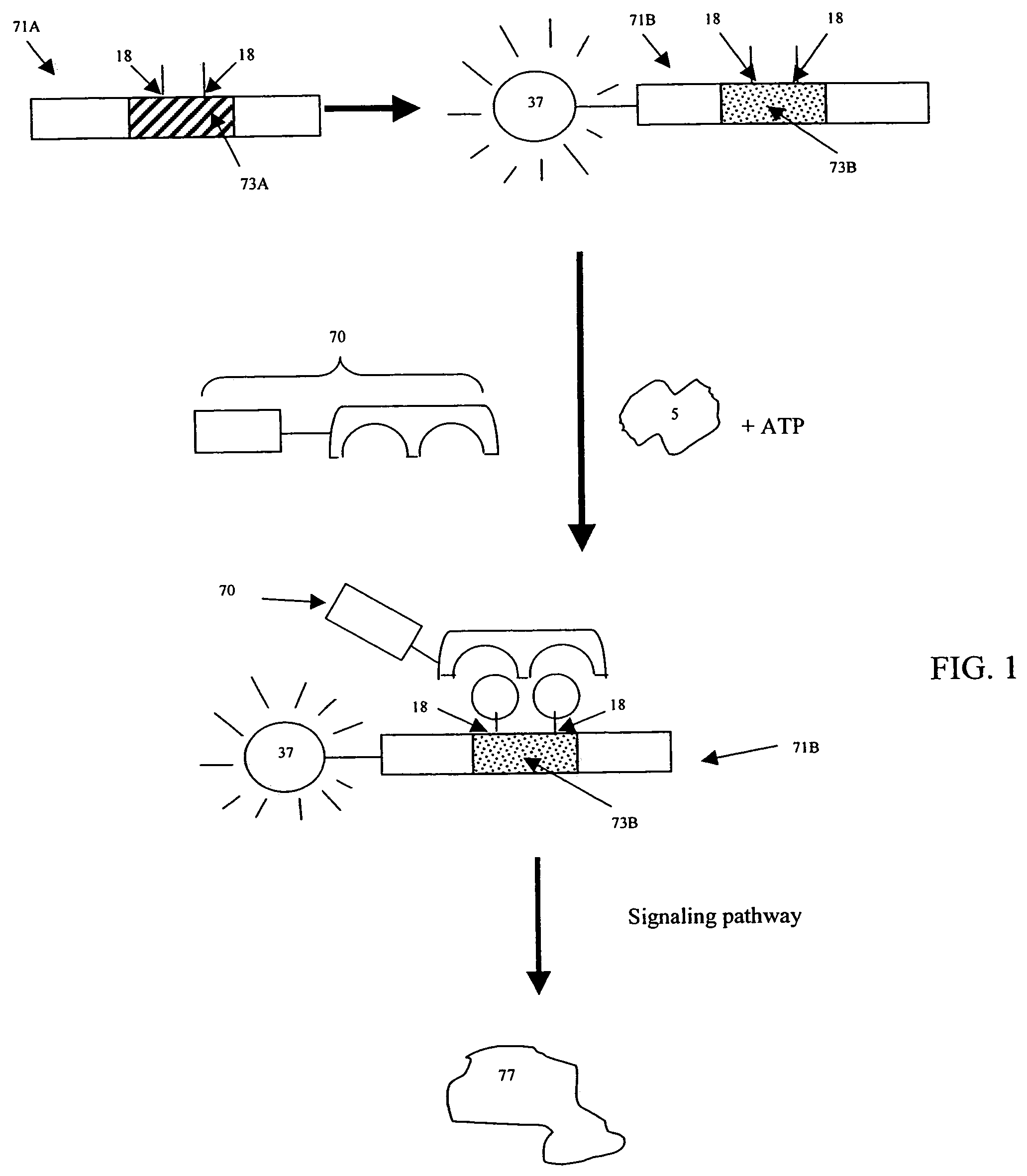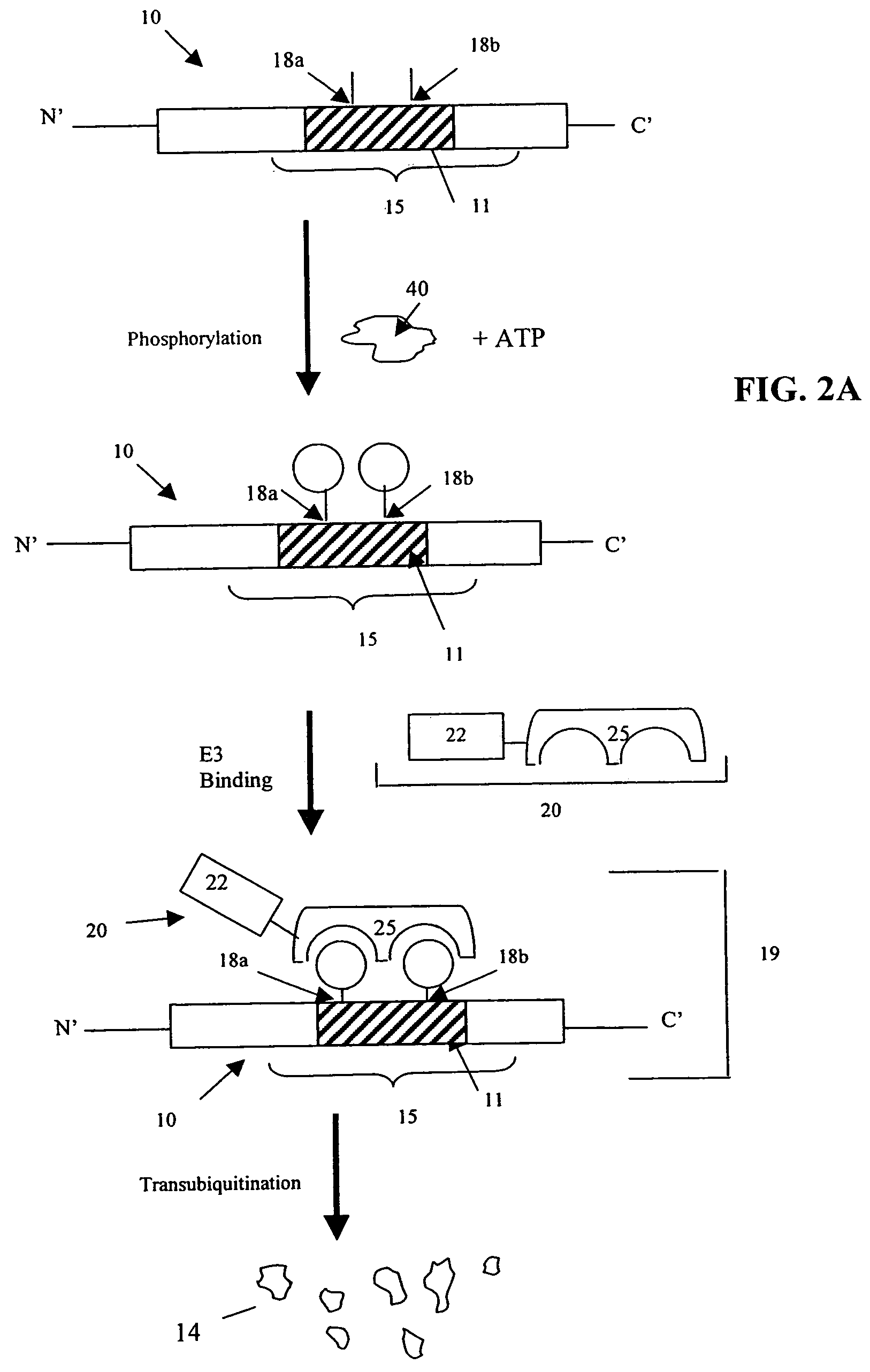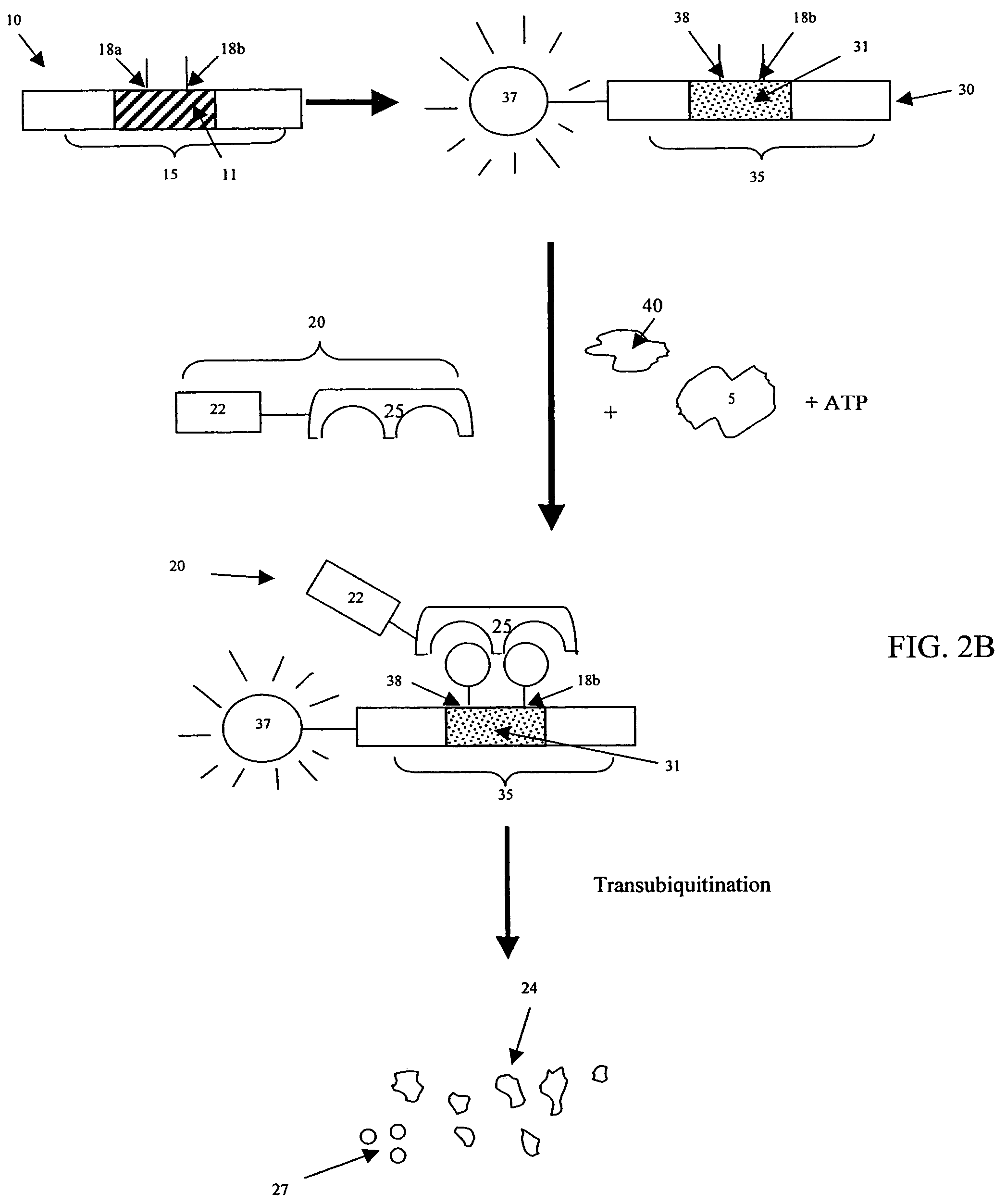Cell-based screening methods
a cell-based and screening technology, applied in the field of cell-based screening methods, can solve the problems of limited efficacy, difficult to assess situ or in vivo specificity of the molecule, and limited specificity of most chemotherapeutic drugs, and achieve the effect of comparing the activity of different kinases in a cell with relative eas
- Summary
- Abstract
- Description
- Claims
- Application Information
AI Technical Summary
Benefits of technology
Problems solved by technology
Method used
Image
Examples
Embodiment Construction
[0033]Cellular signaling pathways include signaling events in which a signaling enzyme interacts with a substrate and subsequently causes the substrate to be targeted by the rest of the signaling pathway. Some signaling events are regulated by a kinase: some require phosphorylation of a substrate at a specific amino acid position by a wild type kinase; some require non-phosphorylation or dephosphorylation of a substrate at a specific amino acid position. Others signaling events do not depend on any phosphorylation event. For example, binding between a ubiquitin E3 ligase (E3 ligase)—a signaling enzyme—and its substrate can fall under any of these categories. In some cases, E3 ligase binding is regulated by a kinase, and in other cases it is not. E3 ligase recognition and binding to a substrate causes the substrate to be targeted by the ubiquitin-mediated degradation pathway. Other examples of signaling events include, but are not limited to, binding of a transporting protein—a signa...
PUM
 Login to View More
Login to View More Abstract
Description
Claims
Application Information
 Login to View More
Login to View More - R&D
- Intellectual Property
- Life Sciences
- Materials
- Tech Scout
- Unparalleled Data Quality
- Higher Quality Content
- 60% Fewer Hallucinations
Browse by: Latest US Patents, China's latest patents, Technical Efficacy Thesaurus, Application Domain, Technology Topic, Popular Technical Reports.
© 2025 PatSnap. All rights reserved.Legal|Privacy policy|Modern Slavery Act Transparency Statement|Sitemap|About US| Contact US: help@patsnap.com



